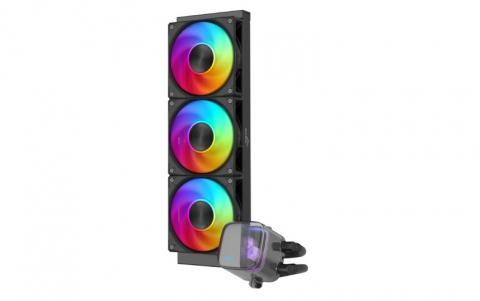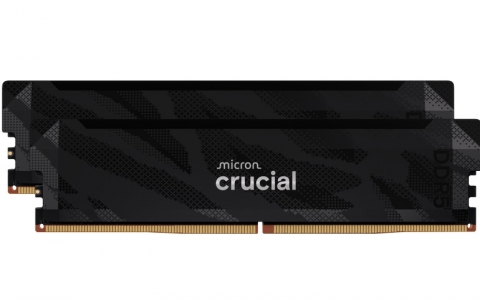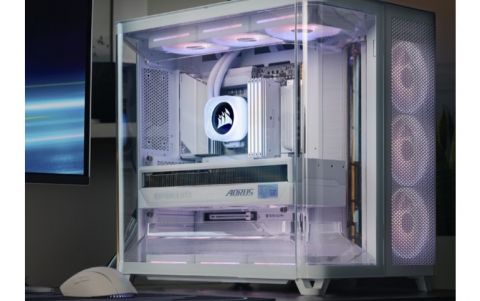
IBM Details Memory Advance for Chips
IBM has devised a way to triple the amount of memory stored on
computer chips and double the performance of processors
by replacing a problematic type of memory with a variety that uses
much less space on the slice of silicon.
The company said Wednesday that its new
memory technology will help unclog crippling bottlenecks that build
up as increasingly powerful microprocessors attempt to retrieve
data from a separate memory chip faster than it can be delivered.
IBM said its solution entails swapping out most of the static random access memory, or SRAM, used to store information directly on computer chips and integrating onto the chip another kind of memory, known as dynamic random access memory, or DRAM.
SRAM is a type of memory that's fast and easy to manufacture but takes up a lot of valuable real estate on the chips. DRAM, the most common type of memory used in personal computers, has typically been stored on a separate chip and has previously been viewed as too slow to be integrated directly onto the microprocessor.
IBM said it has been able to speed up the DRAM to the point where it's nearly as fast as SRAM, and that the result is a type of memory known as embedded DRAM, or eDRAM, that helps boost the performance of chips with multiple core calculating engines and is particularly suited for enabling the movement of graphics in gaming and other multimedia applications. DRAM will also continue to be used off the chip.
The technology is expected to be a key feature of IBM?s 45nm (nanometer) microprocessor roadmap and will become available beginning in 2008.
IBM presented details of its research Wednesday at the International Solid State Circuits Conference in San Francisco.
Earlier this week, Intel said it has developed a research chip capable of performing calculations as quickly as a supercomputer while only consuming as much energy as a light bulb.
And last month, Intel and IBM separately announced they had figured out how to replace problematic but vital materials in transistors that had begun leaking too much electric current as the circuitry on computer chips gets smaller.
All three announcements help the semiconductor industry maintain the pace of Moore's Law, the 1965 prediction by Intel co-founder Gordon Moore that the number of transistors on a chip should double about every two years.
eDRAM Specifications
cell size: 0.126 mm2
Power supply: 1 V
availability: 98.7%
Tile: 1K RowX16 Col X146 (2Mb)
AC power: 76 mW
standby keep alive Power: 42 mW
Random cycle time: 2ns
Latency: 1.5ns
IBM said its solution entails swapping out most of the static random access memory, or SRAM, used to store information directly on computer chips and integrating onto the chip another kind of memory, known as dynamic random access memory, or DRAM.
SRAM is a type of memory that's fast and easy to manufacture but takes up a lot of valuable real estate on the chips. DRAM, the most common type of memory used in personal computers, has typically been stored on a separate chip and has previously been viewed as too slow to be integrated directly onto the microprocessor.
IBM said it has been able to speed up the DRAM to the point where it's nearly as fast as SRAM, and that the result is a type of memory known as embedded DRAM, or eDRAM, that helps boost the performance of chips with multiple core calculating engines and is particularly suited for enabling the movement of graphics in gaming and other multimedia applications. DRAM will also continue to be used off the chip.
The technology is expected to be a key feature of IBM?s 45nm (nanometer) microprocessor roadmap and will become available beginning in 2008.
IBM presented details of its research Wednesday at the International Solid State Circuits Conference in San Francisco.
Earlier this week, Intel said it has developed a research chip capable of performing calculations as quickly as a supercomputer while only consuming as much energy as a light bulb.
And last month, Intel and IBM separately announced they had figured out how to replace problematic but vital materials in transistors that had begun leaking too much electric current as the circuitry on computer chips gets smaller.
All three announcements help the semiconductor industry maintain the pace of Moore's Law, the 1965 prediction by Intel co-founder Gordon Moore that the number of transistors on a chip should double about every two years.
eDRAM Specifications
cell size: 0.126 mm2
Power supply: 1 V
availability: 98.7%
Tile: 1K RowX16 Col X146 (2Mb)
AC power: 76 mW
standby keep alive Power: 42 mW
Random cycle time: 2ns
Latency: 1.5ns





















